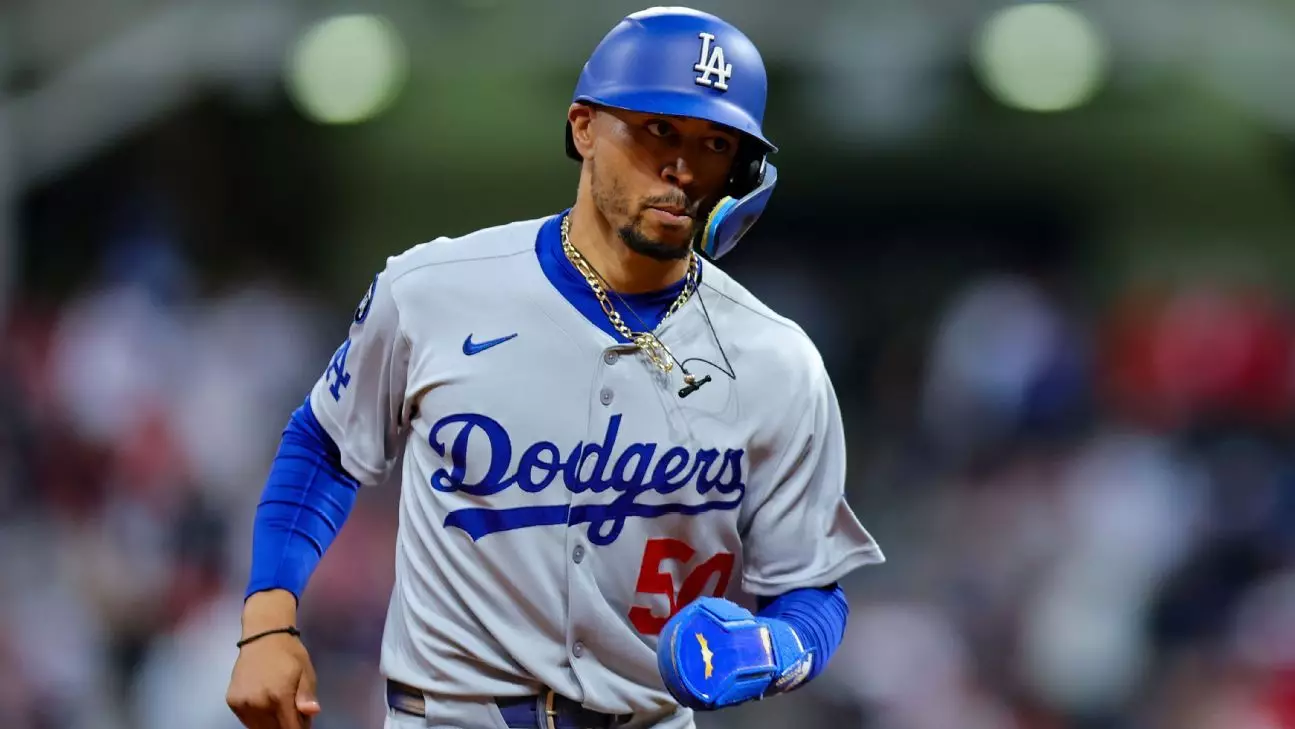In the fast-paced and often unforgiving world of professional sports, a trivial accident can spiral into significant ramifications. Los Angeles Dodgers superstar Mookie Betts is the latest victim of such misfortune, sidelined with a fractured toe from an off-field mishap at his home. Slamming his toe against furniture serves as a stark reminder that even the most elite athletes are not immune to the everyday hazards of life. The irony is palpable; Betts was emerging as a crucial player in the Dodgers’ campaign, only to be hindered by something as mundane as a stubbed toe.
Mookie’s setback arrives at a critical juncture in the season—an opening series against the New York Yankees that had the entire baseball community buzzing. It’s unfortunate that this vibrant matchup will be lacking one of its marquee players, further complicating the Dodgers’ strategy. Manager Dave Roberts remains hopeful, expressing optimism that Betts could return sooner rather than later, reinforcing the common sports adage that athletes should be re-evaluated on a “day-to-day” basis. This cycle of optimism in the face of injury is all too familiar in sports, yet it doesn’t mask the concerns that linger within the Dodgers’ camp.
Impact on Team Dynamics: More than Just Betts
As if Betts’ absence weren’t enough, the Dodgers are grappling with a slew of other injuries that threaten to destabilize their lineup. The impending loss of Evan Phillips, headlining a growing list of sidelined pitchers, introduces an alarming level of chaos into the team’s dynamics. Having to undergo Tommy John surgery, Phillips’ injury means he will be out for the majority of two upcoming seasons, a devastating blow for a player who emerged as a consistent late-game asset.
Phillips’ robust performance in previous seasons saw him crowned as a reliable option, boasting impressive statistics that included a 2.21 ERA and 44 saves from 2022 to 2024. The growing concern over his health points to a deeper issue within the Dodgers’ organization: injuries aren’t being managed efficiently, or perhaps the rigorous demands of the game are taking a more substantial toll on players than we dare to recognize.
In response to Phillips’ departure, the Dodgers hastily sought reinforcements, acquiring former All-Star closer Alexis Diaz. Yet, the irony of seeking help from a player recently demoted to Triple-A due to lackluster performance raises eyebrows. Will the Dodgers truly find solutions in such desperation?
The Fragile Nature of Athletic Prowess
The fragility of athletes is often overlooked in the grand narrative surrounding professional sports. In our fixation on stellar performances and acclaimed accomplishments, we frequently forget that these athletes are prone to the same physical vulnerabilities as anyone else. Betts represents not only top-tier talent but also brings the inherent risks of injury that can abruptly alter a season’s trajectory.
This poignant instance amplifies feminist concerns: how can organizations prioritize player well-being while navigating the intense pressure to perform? Dodgers’ general manager, Brandon Gomes, suggests a wilful ignorance of underlying health issues when stating that future injuries should be anticipated as players push their limits. This raises a troubling question regarding the human cost of our entertainment.
The current injury crisis within the Dodgers echoes sentiments of institutional failure to protect athlete welfare, prompting a necessary discussion about work-life balance. Shouldn’t we, as a society deeply invested in sports, demand accountability from organizations to ensure their star players are not merely seen as corporate assets but as human beings deserving of care?
Looking Ahead: The Challenge of Maintaining Competitiveness
With multiple injuries straining its ranks, the Dodgers face a challenging reality. The loss of significant talent isn’t merely a logistical headache; it translates into a palpable drop in performance. As fans, we can’t help but wonder how this will affect their chances in a tight race for playoff contention. Depth in baseball rosters is everything, yet relying on less experienced players or hastily acquired talent could expose glaring deficiencies.
Amid these tribulations, light remains on the horizon. If Betts can heal swiftly and return to his prior form, the Dodgers might just recover. The crux of any successful franchise lies in a well-rounded roster and a commitment to fostering emerging talents while ensuring the well-being of established stars. The challenge remains not just in managing injuries but in creating a culture where players can thrive without the looming specter of being collateral damage in the win-at-all-cost mentality.
In this fast-evolving landscape of baseball, the ability to adapt swiftly will define the Dodgers’ fate. If they can navigate this storm with resilience and foresight, they may just emerge stronger.

